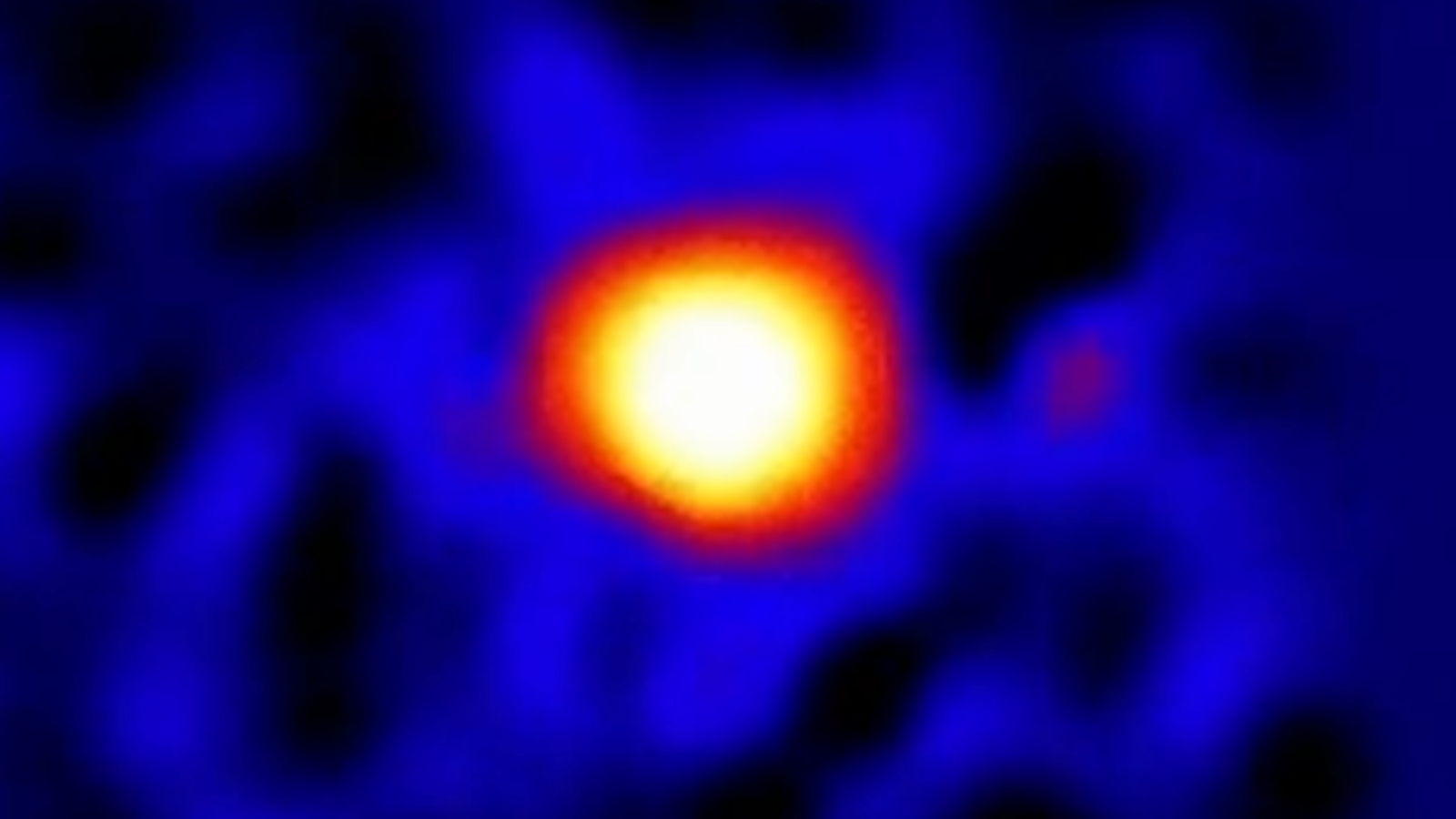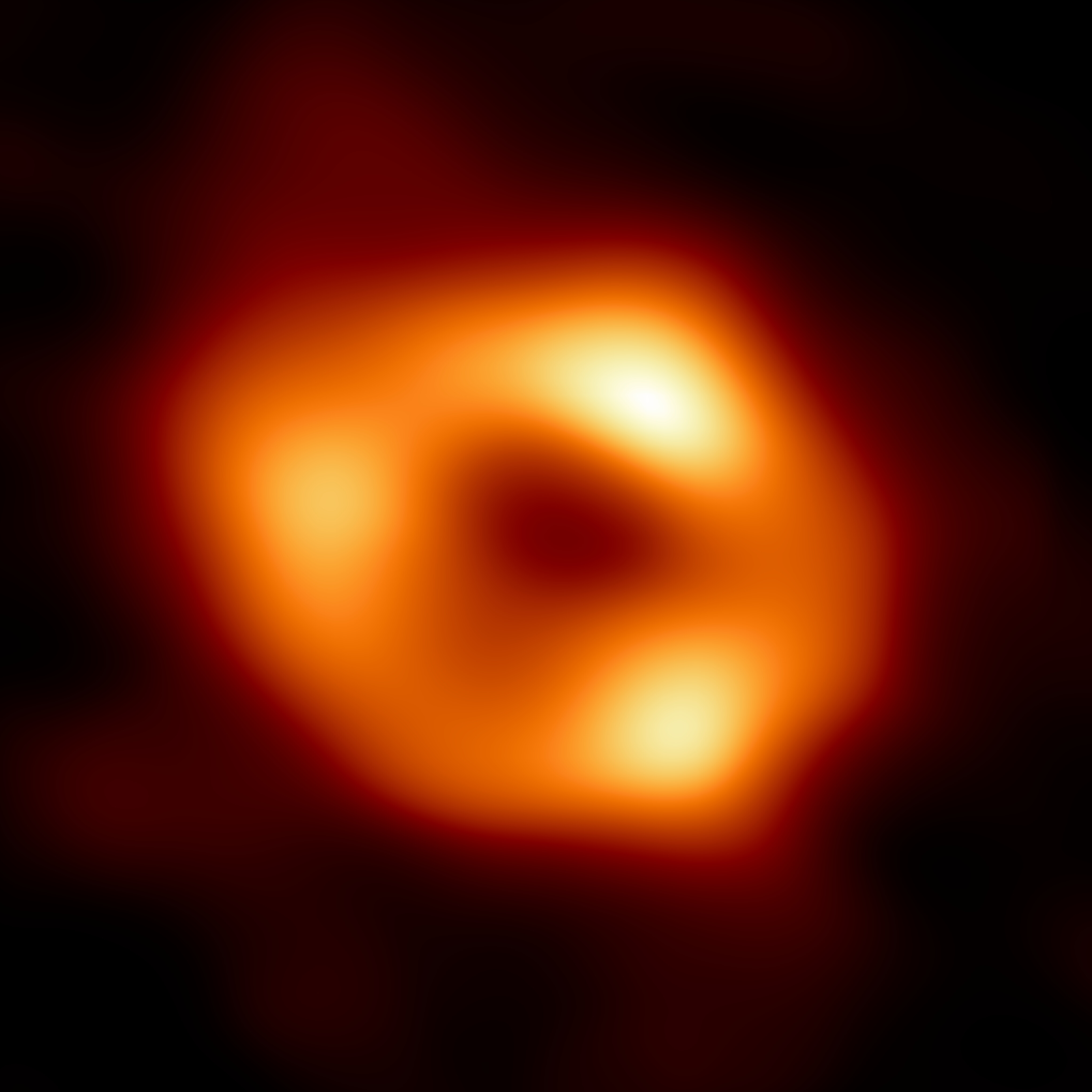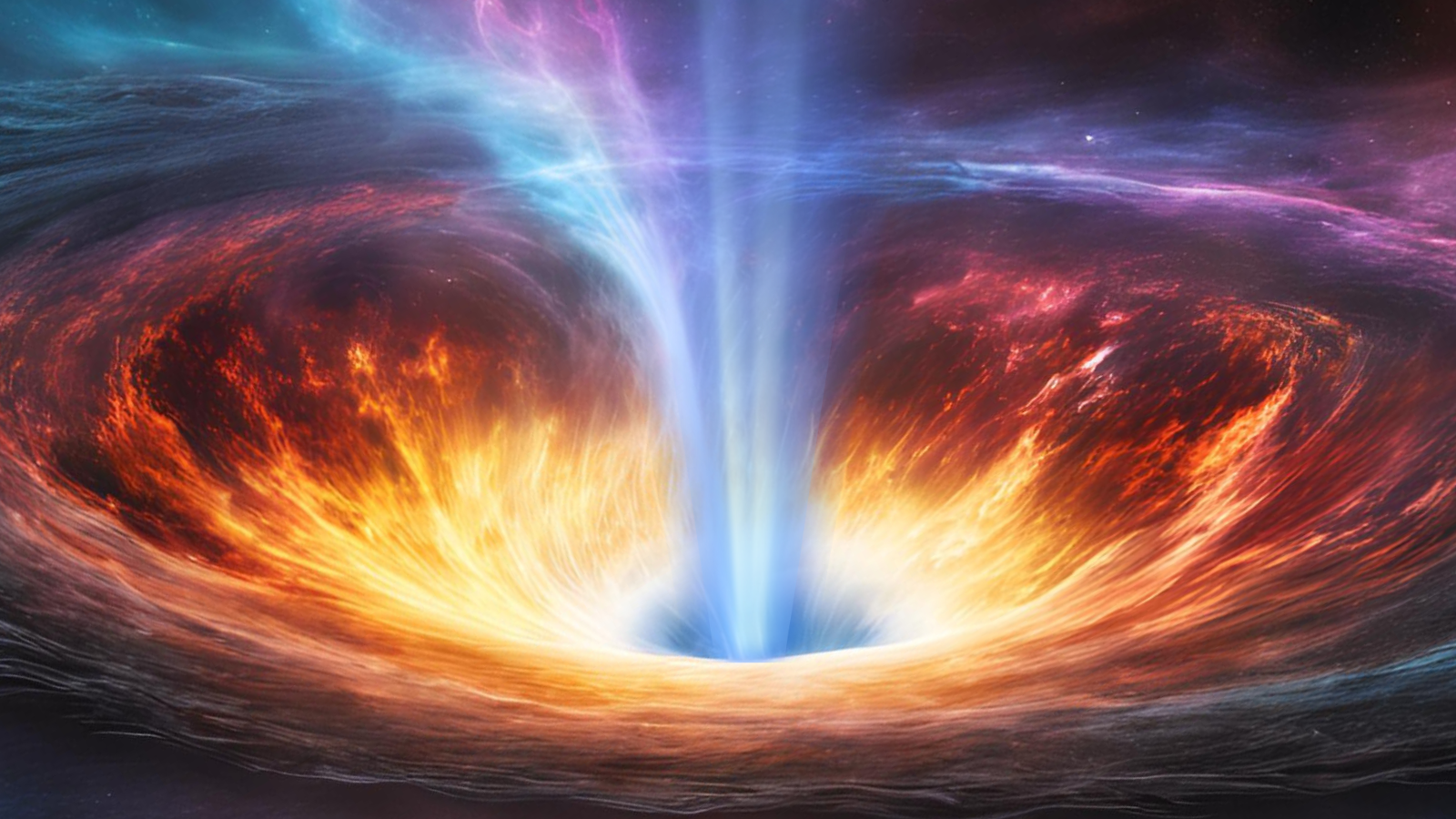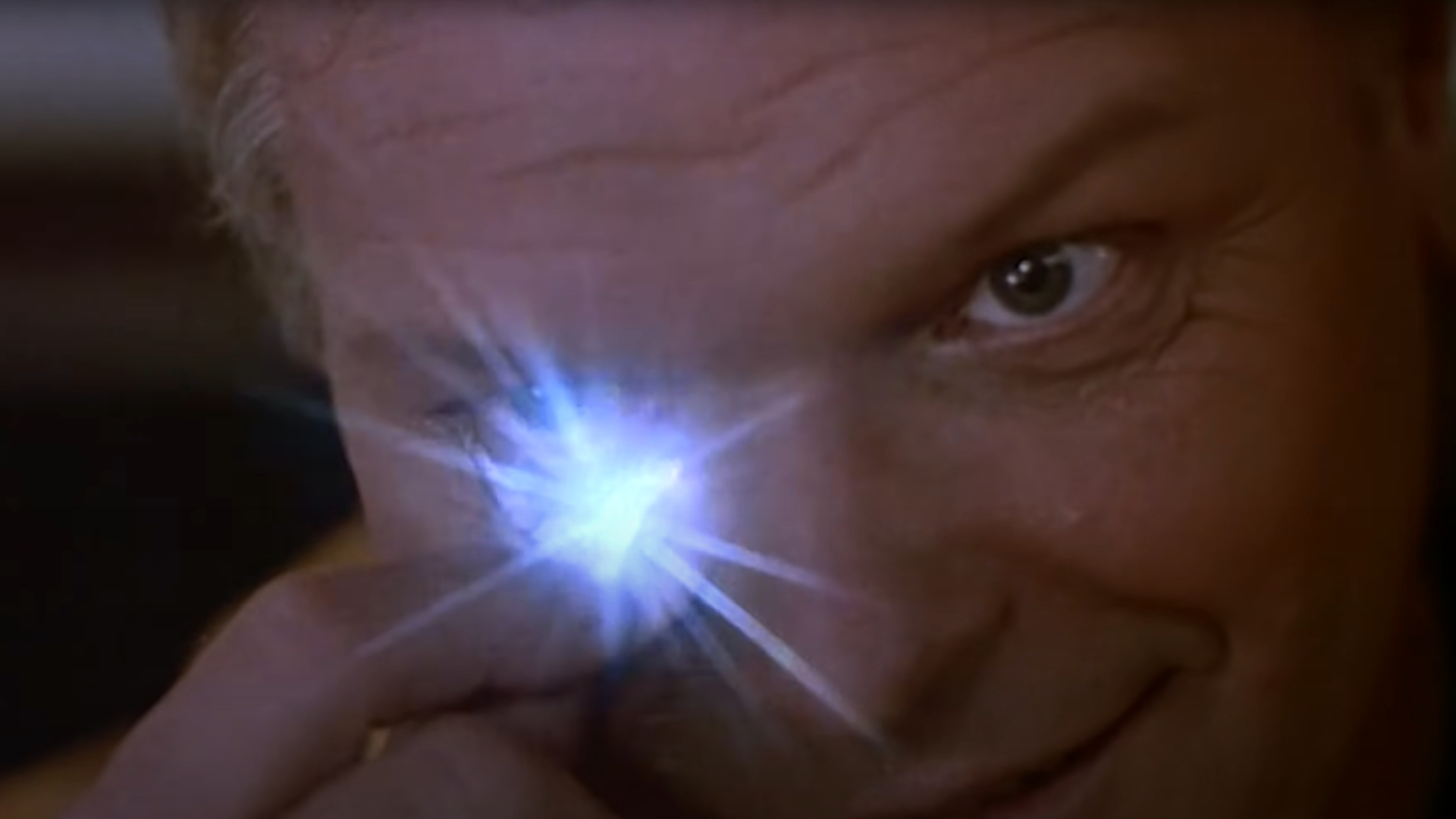James Webb Space Telescope finds our Milky Way galaxy's supermassive black hole blowing bubbles (image, video)
"Flares are expected to happen in essentially all supermassive black holes, but our black hole is unique."
The black hole at the heart of our galaxy is a real party animal, endlessly blowing cosmic bubbles. The findings aren't frivolous at all and could help us better understand how black holes interact with their environments and help galaxies evolve.
Using the James Webb Space Telescope (JWST), scientists discovered that the Milky Way's central supermassive black hole, Sagittarius A* (Sgr A*), is constantly streaming out flares without respite. The activity occurs over a wide range of time, including short interludes and long stretches.
While some of the flares are mere faint flickers lasting just seconds, every day, Sgr A* spews out much brighter and more energetic flares. Also, some of the faintest flares can rage for months at a time.

"Flares are expected to happen in essentially all supermassive black holes, but our black hole is unique," team leader and Northwestern University researcher Farhad Yusef-Zade said in a statement. "It is always bubbling with activity and never seems to reach a steady state. We observed the black hole multiple times throughout 2023 and 2024, and we noticed changes in every observation.
"We saw something different each time, which is really remarkable. Nothing ever stayed the same."
Cosmic fireworks at the heart of the Milky Way
The team used the JWST's near-infrared camera (NIRCam) instrument to observe Sgr A* for several 8-to-10-hour periods totaling two days over the course of a year. This revealed how Sgr A* and its immediate surroundings changed over time.
Yusef-Zadeh and colleagues had expected to see flares, but the Milky Way's central black hole, which has a mass of around 4.3 million suns, was more active than predicted, launching cosmic fireworks of varied brightness and duration around the clock.

The matter around central supermassive black holes like Sgr A* form flattened clouds of gas and dust called "accretion disks." The team saw the accretion disk of Sgr A* generating up to six times a day, with smaller sub-flares punctuating these blasts.
"In our data, we saw constantly changing, bubbling brightness," Yusef-Zadeh said. "And then boom! A big burst of brightness suddenly popped up. Then, it calmed down again.
Breaking space news, the latest updates on rocket launches, skywatching events and more!
"We couldn't find a pattern in this activity. It appears to be random. The activity profile of the black hole was new and exciting every time that we looked at it."
Making waves around black holes
Yusef-Zadeh and colleagues don't yet understand what process are generating these flares around Sgr A*. However, they suspect the flares of different durations are caused by different mechanisms.
Comparing the accretion disk to a river, the short, faint flares are akin to small random ripples on the river's surface caused by minor disturbances.
The longer, brighter flares, on the other hand, are like tidal waves and are generated by more significant events in the accretion disk. These events are powerful enough to compress plasma and generate a temporary burst of radiation.
"It's similar to how the sun's magnetic field gathers together, compresses, and then erupts a solar flare," Yusef-Zadeh explained. "Of course, the processes are more dramatic because the environment around a black hole is much more energetic and much more extreme. But the sun’s surface also bubbles with activity."
These large turbulent events and the powerful flares could be related to magnetic reconnection. This occurs when two magnetic fields collide and accelerate charged particles to near light-speeds causing them to emit bright bursts of radiation.

NIRCam has the capability to see two different wavelengths of infrared light, and this allowed the team to observe how the flares' brightness changed at each wavelength. This created a nuanced picture of the behavior around Sgr A*, which delivered yet another shock.
It turns out the brightness of the short-wavelength radiation events appeared to change ahead of their long-wavelength counterparts.
"This is the first time we have seen a time delay in measurements at these wavelengths," Yusef-Zadeh said. "We observed these wavelengths simultaneously with NIRCam and noticed the longer wavelength lags behind the shorter one by a very small amount — maybe a few seconds to 40 seconds."
The time delay hints at the phenomena occurring around Sgr A*. One possible explanation for this is the accelerated particles losing energy as the flare evolves. This energy loss occurs more quickly at shorter wavelengths than at longer wavelengths.
Yusef-Zadeh and colleagues now hope to use the JWST to observe Sgr A* for an extended period of time. The researcher has submitted a proposal to use the $10 billion space telescope to observe our central supermassive black hole for an uninterrupted 24 hours.
"When you are looking at such weak flaring events, you have to compete with noise," Yusef-Zadeh concluded. "If we can observe for 24 hours, then we can reduce the noise to see features that we were unable to see before.
"That would be amazing. We also can see if these flares show periodicity (or repeat themselves) or if they are truly random."
The team's research was published on Tuesday (Feb. 18) in The Astrophysical Journal Letters.
Join our Space Forums to keep talking space on the latest missions, night sky and more! And if you have a news tip, correction or comment, let us know at: community@space.com.

Robert Lea is a science journalist in the U.K. whose articles have been published in Physics World, New Scientist, Astronomy Magazine, All About Space, Newsweek and ZME Science. He also writes about science communication for Elsevier and the European Journal of Physics. Rob holds a bachelor of science degree in physics and astronomy from the U.K.’s Open University. Follow him on Twitter @sciencef1rst.
-
arptttt For these and other articles you post about published research it would be REALLY helpful if you clearly added the link to the journal article in question, such as below the heading. E.g. for this it would be: https://iopscience.iop.org/article/10.3847/2041-8213/ada88b.Reply -
Ed Stauffer Problem : black hole jetsReply
Assumption: When the black hole accretion disk begins to heat up it also causes the jets of gaseous dark matter to explode straight out of the poles of the co-rotating sphere of liquid dark matter in such a strong steady stream that it carry’s plasma and liquid dark matter with it. Once the jet begins to slow and spread out the turbulence allows the zero gravity equivalent to affect some of the liquid dark matter carried in the jet. This releases more heat and the expansion further accelerates the jet. This can repeat multiple times along the jet. The heat released in these phase transitions also ionizes the plasma which builds on the magnetic fields along the jets.
Problem : heating at the edge of the galactic halo
Assumption: anywhere that liquid dark matter is exposed to zero g or equivalent it flashes to gaseous dark matter and releases heat.
circulating dark matter
Dark matter is originally started circulating by matter accreting to form stars and black holes. Dark matter flashes before raining back down and thus it is slowly brought up to speed by the inward motions of normal matter. ie planets, stars, solar systems and galaxies, all of which have their own circulation patterns. The larger the circulation the more gas and dust is accelerated by the pattern. Dark matter is like the ocean it has currents and streams. It also has different salinities (concentrations of normal matter) depending on how much dust and gas has been accumulated. Where these flows intersect or cross there are collisions of normal matter which give off radio waves. Individually they are too small to be detected. But if you look down a stream you see the cumulative effect from the stream and the galactic halo interactions behind it which add up to something we can detect. On a galactic scale the dark (water) cycle determines how much dark matter a galaxy has. -
Unclear Engineer If regular matter is moving past stationary dark matter, it seems reasonable for the dark matter to be gravitationally attracted to it and tend to move with the regular matter. That would be especially true if the regular matter stream was non-uniform in mass distribution.Reply
On the other hand, postulating all sort of phases for dark matter has a problem with dark matter not appearing to either absorb or emit photons, which are the main ways that regular matter heats and cools in space. So, unless there is some sort of "dark photon" that can serve that purpose for dark matter, cycles of heating and cooling become hard to explain for dark matter. And, unless dark matter has properties similar to regular matter atoms, postulating that it changes phases as it heats and cools is another problem with the idea that does not seem to have any observational support.
Considering that it seems to be much m ore abundant than regular matter, it is not unreasonable to suspect that dark matter is not all the same. But, without any actual detection, so far, it is not proper to claim that some postulated black matter phenomenon "is" the case. Better to recognize that it "might be" the case.
